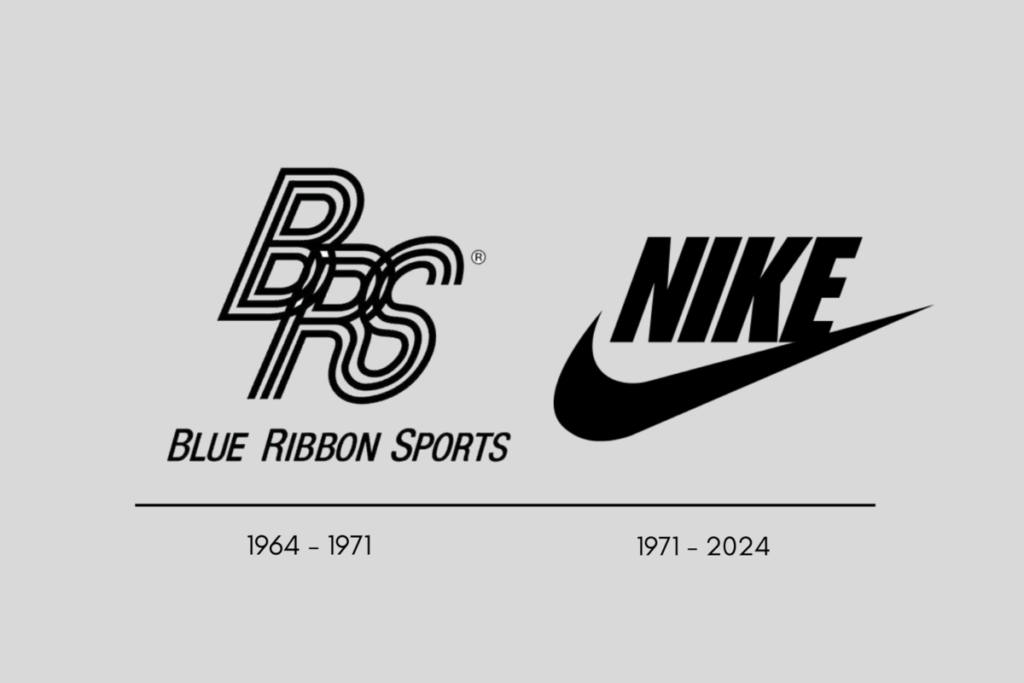Nike’s “Dream Crazy” ad featuring Colin Kaepernick sparked global conversations and highlighted the brand’s bold approach to storytelling.
This powerful narrative not only underscored Nike’s commitment to social justice but also reinforced its position as a leader in innovative marketing.
Nike has been a master of storytelling for decades. The company’s ability to connect with consumers on an emotional level through powerful narratives has set it apart in the competitive world of sports marketing.
This blog explores the various elements of Nike’s storytelling strategy and how they contribute to the brand’s enduring success.

The Foundation of Nike’s Storytelling
Nike’s journey began with a mission to push the boundaries of innovation in sportswear. The “Just Do It” slogan, introduced in 1988, encapsulates the brand’s philosophy of empowerment and perseverance. This mantra is more than a tagline; it’s the core of Nike’s narrative, inspiring athletes and non-athletes alike to overcome challenges and achieve their personal best.
Nike’s roots are deeply embedded in the spirit of competition and the pursuit of excellence. Co-founder Bill Bowerman’s drive to create the perfect running shoe laid the groundwork for a brand that continuously strives to push the envelope.
This relentless pursuit of innovation is a recurring theme in Nike’s storytelling.

Origins and Mission:
Nike’s story began in 1964 as Blue Ribbon Sports, evolving into “Nike” in 1971—a name inspired by the Greek goddess of victory. This shift marked more than just a rebranding; it reflected a vision to empower athletes worldwide. Today, that mission continues to drive everything Nike does.
Philosophy – Just Do It:
Introduced in 1988, the “Just Do It” campaign is one of the most iconic slogans in advertising history. It encapsulates the essence of Nike’s brand – a call to action that encourages people to push their limits and strive for greatness. This philosophy is embedded in every story Nike tells, making it a central theme of the brand’s narrative.

Key Elements of Nike’s Storytelling
Nike’s storytelling is built on several key elements that make its narratives powerful and relatable.
Relatable Characters:
Nike’s ads often feature a mix of professional athletes and everyday individuals, making their stories relatable to a broad audience. Whether it’s LeBron James or an unknown high school runner, Nike’s characters embody the spirit of determination and resilience.
Nike’s ability to cast relatable characters in its campaigns helps the brand connect with a wide audience. By featuring both elite athletes and everyday people, Nike’s stories resonate on a personal level. For instance, the “Find Your Greatness” campaign highlighted ordinary individuals achieving extraordinary feats, making greatness seem attainable for everyone.
Emotional Appeal:
Nike masterfully taps into emotions, crafting stories that move viewers to feel inspired, motivated, and connected. Ads like “The Runner” shift the perception of greatness, showing that it’s about personal achievement rather than being the best.
Emotion is a powerful tool in storytelling, and Nike leverages it to create deep connections with its audience. By focusing on themes like triumph over adversity, personal growth, and the human spirit, Nike’s ads evoke strong emotional responses. This emotional engagement is crucial in building brand loyalty and trust.
Inclusivity and Diversity
Representation is crucial in Nike’s campaigns. By showcasing a diverse range of athletes and stories, Nike ensures that their message of inclusivity and empowerment resonates across different demographics, promoting a sense of belonging and inspiration.
Authenticity and Real-life Stories
Nike’s storytelling is grounded in authenticity, often featuring real-life stories that echo genuine experiences and struggles. This approach not only enhances credibility but also fosters deeper emotional connections with the audience.
Iconic Nike Campaigns
Michael Jordan and Air Jordans
Nike’s partnership with Michael Jordan revolutionized sports marketing. The Air Jordan campaign, with its rebellious flair, turned the basketball star into a global icon and established Nike as a cultural force. The story of how Jordan overcame obstacles to become a legend mirrors Nike’s own journey of innovation and persistence.
The Runner
This ad redefined what it means to be great, focusing on the personal achievements of an overweight runner. By celebrating small victories, Nike motivated individuals to push their limits, no matter their starting point. The ad’s narrative emphasizes that greatness is defined by personal effort and determination.
Dream Crazy: Featuring Colin Kaepernick
Featuring Colin Kaepernick, this ad challenged societal norms and encouraged viewers to “dream crazy.” Despite controversy, the campaign’s bold stance on social issues strengthened Nike’s brand identity and attracted a wave of support from celebrities and consumers alike. This campaign highlights Nike’s commitment to standing up for what it believes in, reinforcing its authentic voice.
Breaking2
Nike’s Breaking2 project aimed to break the two-hour marathon barrier, featuring elite runners like Eliud Kipchoge. This campaign showcased human potential and endurance, aligning with Nike’s core message of pushing beyond limits. The narrative focused on preparation, teamwork, and the relentless pursuit of a seemingly impossible goal.

The Nike ‘Story Marketing’ Playbook
Creating Relatable Narratives
Nike’s storytelling often avoids product-centric messages. Instead, it highlights the transformative potential of its products through relatable stories. This approach not only humanizes the brand but also makes its message universally appealing.
Emotional Connections
Emotional resonance is at the heart of Nike’s storytelling. By invoking strong emotions, Nike ensures that its ads are memorable and impactful. Stories like “Dream Crazy” evoke a sense of purpose and commitment, encouraging viewers to reflect on their values and aspirations.
Highlighting Diversity
Nike’s inclusive storytelling showcases a wide array of backgrounds and abilities. This diversity ensures that more people see themselves represented in Nike’s campaigns, fostering a deeper connection with the brand.
The Role of Music and Visuals
Nike’s use of powerful music and striking visuals enhances the emotional impact of their stories. The combination of these elements creates a compelling narrative that captures and retains audience attention.
Engaging Content Across Platforms
Nike’s storytelling extends beyond traditional media. By leveraging social media platforms, Nike engages with audiences through interactive content, behind-the-scenes footage, and user-generated stories, maintaining a dynamic and immersive brand presence.
Impact of Storytelling on Nike’s Brand & Lessons for Brands
Building Trust and Credibility
Transparency and authenticity in storytelling build trust. Nike’s willingness to tackle controversial issues head-on has earned it credibility and respect among consumers who value authenticity.
Market Position and Growth
Nike’s effective use of storytelling has significantly contributed to its market dominance. The brand’s consistent growth and strong market share reflect the success of its narrative-driven marketing strategies.
Customer Loyalty
Storytelling fosters a loyal community of customers who feel emotionally connected to the brand. Nike’s engaging narratives encourage repeat purchases and brand advocacy, driving long-term customer loyalty.
Influence on Culture and Society
Nike’s storytelling not only impacts its brand but also influences culture and society. By addressing social issues and promoting positive change, Nike shapes public discourse and inspires collective action.
Lessons for Other Brands
Adopt Storytelling
Brands can learn from Nike by incorporating storytelling into their marketing strategies. Focus on creating narratives that resonate with your audience on a personal level.
Understand Your Audience
Tailor your stories to reflect the values and aspirations of your target market. Use customer insights to create relatable and compelling narratives.
Measure Impact
Utilize analytics to track the effectiveness of your storytelling campaigns. Measure engagement, sentiment, and conversion rates to refine your strategies and maximize impact.
Invest in Quality Content
High-quality content is essential for effective storytelling. Invest in professional production, compelling writing, and authentic visuals to create memorable narratives.
Be Authentic and Transparent
Authenticity is crucial in storytelling. Be transparent about your brand’s values and actions, and address social issues with sincerity and commitment.
Conclusion
Nike’s storytelling isn’t just about selling shoes; it’s about selling dreams, emotions, and a sense of possibility.
By prioritizing authenticity, inclusivity, and emotional resonance, Nike has set a gold standard for narrative-driven marketing. For brands aiming to emulate Nike’s success, the key lies in building genuine connections with your audience and crafting stories that inspire action.
At Soodo, we help DTC brands achieve more by meeting their customers where they shop, enabling them to scale with strategies that resonate across platforms and marketplaces.
Soodo
http://soodo.coSoodo | Shopify Website Development